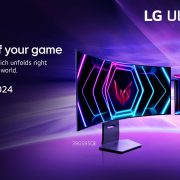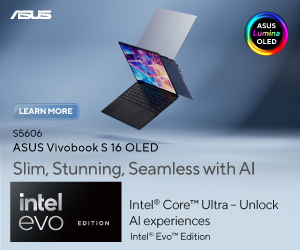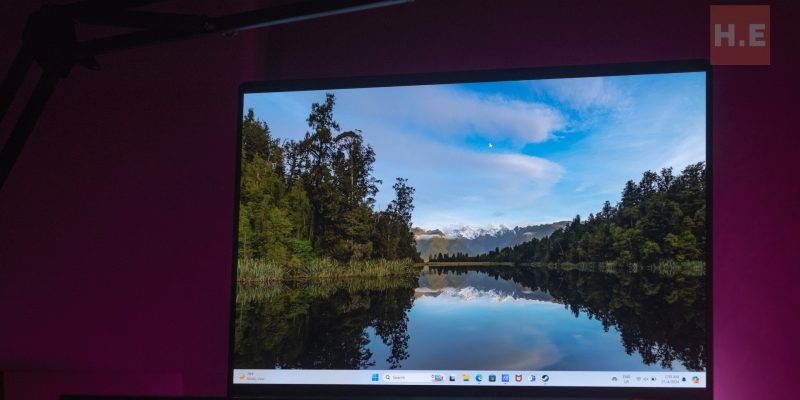
How to Choose Laptop Display
TLDR
- Choosing the right laptop display significantly impacts your user experience.
- This guide explains key display features and their relevance to different user groups.
- Understand panel technology, brightness, refresh rate, contrast ratio, HDR, resolution, and color space.
- We also highlight good example of how laptop display, like ASUS Lumina OLED which addressed all crucial point of a good display
- Make informed decisions to select the ideal display for your needs.
In the realm of technology, acquiring a new laptop can feel like conquering a labyrinth. Processor speeds, RAM capacity, storage options – the list of specifications seems endless. But often, one crucial element gets overshadowed: the display.

This is the window to the user’s digital world, whether is navigate presentations, games, or simply browse the web. The quality of this display significantly impacts user’s experience no matter the rest. Yet, choosing the right one can be a daunting task.

In this guide equips you with the knowledge to select the perfect laptop display based on your specific needs. We’ll delve into the key display aspects – panel technology, brightness, refresh rate, contrast ratio, HDR, resolution, and the hero often left unsung – color space.
We’ll explain what each means, why it matters, and how it caters to different user groups: office workers, gamers, content creators, and everyday users.
Behind the Panel: Display Technology Demystified
The display panel determines how pixels on your screen light up. Common types include TN (Twisted Nematic), IPS (In-Plane Switching), and OLED (Organic Light-Emitting Diode).
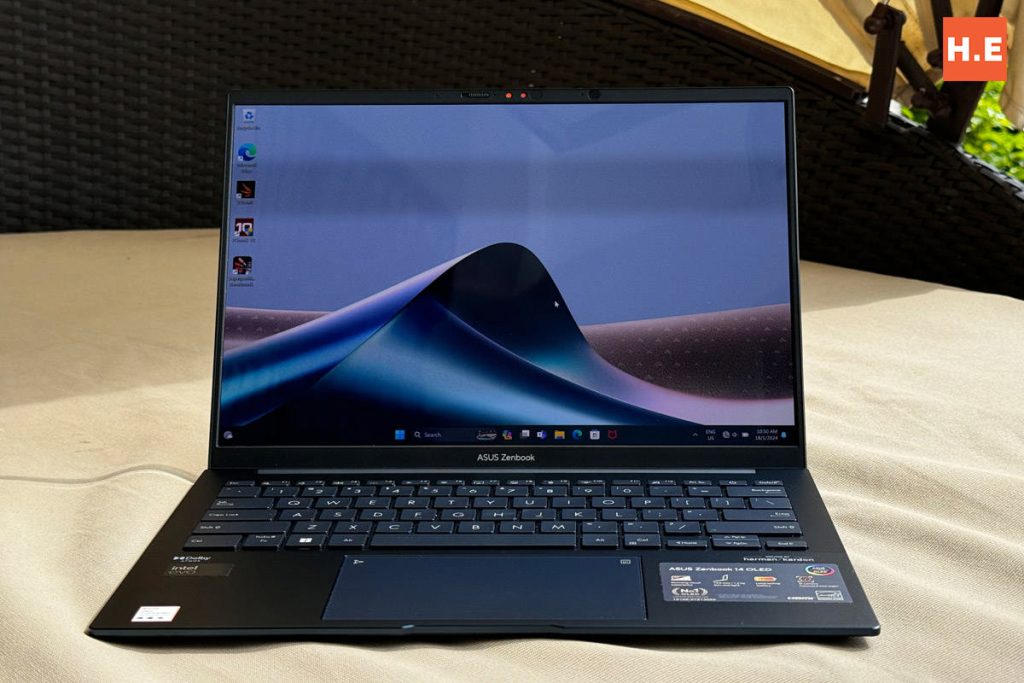
We actually wrote 2 article discussing about panel which is here and here, but let’s briefly go through some of the most major panel.
- TN panels are generally the least expensive but offer limited viewing angles and color accuracy.
- IPS panels provide superior viewing angles and decent color reproduction, making them a solid choice for most users.
- OLED displays boast exceptional color accuracy, deep blacks, and excellent viewing angles, but they can be pricier and susceptible to burn-in if static images are displayed for extended periods.
A good example of OLED Panel:
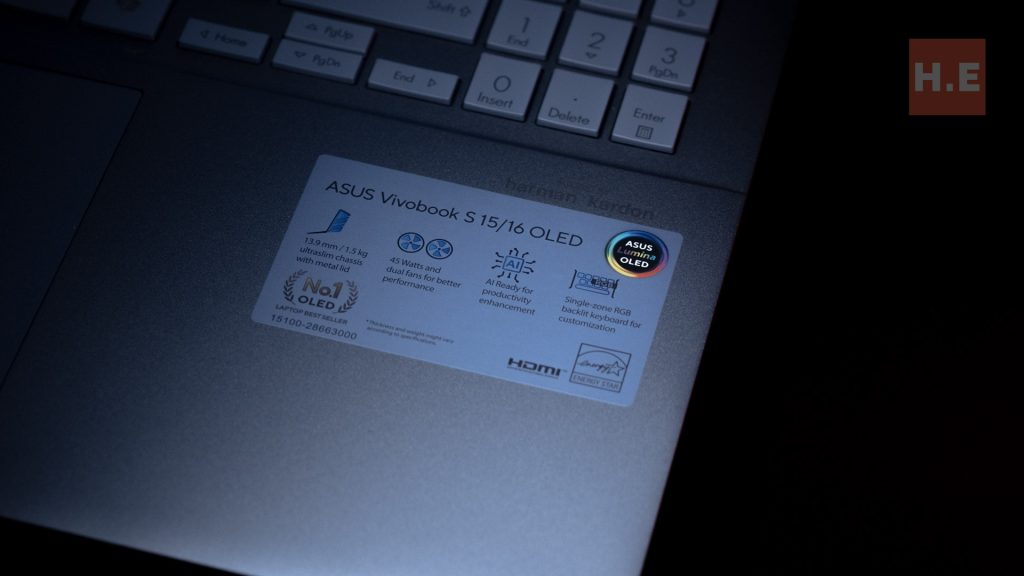
ASUS has long been touting their Lumina OLED display, and rightfully so. Their displays are remarkable in both presentation and performance. The all new ASUS Vivobook S 16 OLED is a prime example, offering excellent viewing angles, great color reproduction, and a smooth refresh rate.
Who should choose what?
- Office Workers: IPS or OLED panels offer a good balance of viewing angles and color accuracy, making them a suitable choice.
- Gamers: Consider All panel would work but make sure it has fast response times for a balance between viewing angles and speed.
- Content Creators: Prioritize panels with high color accuracy like IPS or OLED. These panel offers excellent color and contrast but for OLED do consider the burn-in risk.
- Everyday Users: IPS is a versatile choice for most everyday tasks.
Illuminating the Issue: Brightness Explained
Measured in nits, brightness represents the screen’s ability to emit light. A brighter display offers better readability in well-lit environments but consumes more battery power.
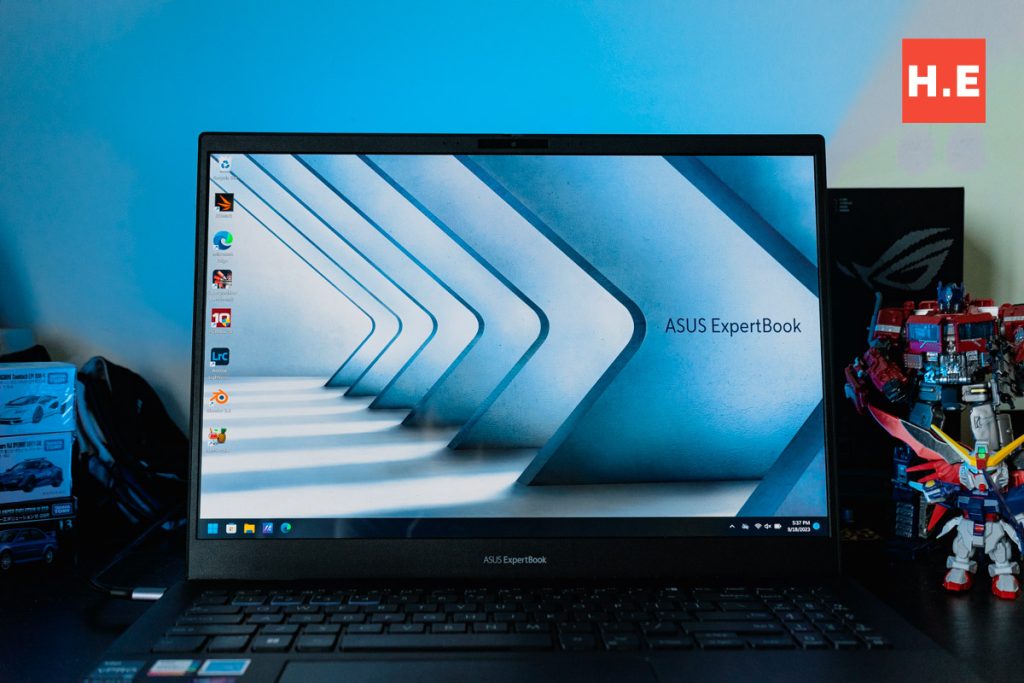
200 nits is about as lowest a person should use in a well-lit environment, but over 300 nits would be most reasonable for eye comfort and accurate color representation begin.
A good example of Brightness level

The ASUS Vivobook S 16 OLED have about 400 nits brightness during normal use, and can reach a peak brightness of 600 nits. This is more than enough to handle any form of task user need it to performance, indoor or outdoor.
Who should choose what?
- Office Workers: 200-300 nits is generally sufficient for indoor use.
- Gamers: Not the biggest priority, but 300 nits or higher can enhance visuals in some games.
- Content Creators: Ideally, 300 nits or higher for accurate color representation in various lighting conditions.
- Everyday Users: 250 nits is a good starting point, with higher nits beneficial for outdoor use.
Keeping Up with the Pace: Refresh Rate Demystified
Refresh rate refers to the number of times per second your screen refreshes the image. Measured in Hertz (Hz), a higher refresh rate translates to smoother visuals, especially noticeable in fast-paced content like games and videos.

Gamers prioritize high refresh rates (think 144Hz or above) for a seamless gaming experience. For everyday tasks and office work, the standard 60Hz refresh rate is sufficient.
A good example of high refresh rate display

With a maximum refresh rate of 120Hz, the ASUS Vivobook S 16 OLED can handle any productivity workload you can throw at it. At this refresh rate, users can enjoy buttery-smooth motion, improved eye comfort, and lifelike motion. While it may not be the ideal 144Hz gaming experience, it comes very close.
Who should choose what?
- Office Workers: 60Hz is sufficient for most office tasks.
- Gamers: Prioritize high refresh rates (144Hz or higher) for a smoother gaming experience.
- Content Creators: 60Hz is adequate for most work, but higher refresh rates can be beneficial for video editing.
- Everyday Users: 60Hz is suitable for basic tasks. Consider higher refresh rates for a more responsive feel, especially for watching videos.
Contrast Ratio: The Dance Between Light and Dark
At a contrast ratio of 1,000,000:1, the ASUS Vivobook S 16 OLED’s panel achieves true black levels by turning off the backlight in darker regions. This creates a deep darkness and brings motion to life, adding depth and emotion to images.
A good example of Contras level:

At 1,000,000:1 level of contrast level, the ASUS Vivobook S 16 OLED’s panel achieves true black level by turning off the black light at darker region. This creates a powerful darkness and brings motion to life, bringing true emotion to images.
Who should choose what?
- Office Workers: A contrast ratio of 1000:1 or higher is suitable for most office work.
- Gamers: Prioritize high contrast for better visibility in dark game environments.
- Content Creators: A high contrast ratio (ideally above 1000:1) is crucial for accurate image representation.
- Everyday Users: A good contrast ratio enhances the viewing experience, but it’s not the top priority.
High Dynamic Range (HDR): Expanding the Visual Canvas
HDR technology offers a wider range of colors and brighter highlights, creating a more realistic image. While not essential for everyday tasks, HDR can significantly enhance the viewing experience for movies, games, and photos that support HDR. Content creators working with HDR content will find it invaluable for ensuring accurate visuals.

However HDR is not the only high dynamic range visual standard, Dolby Vision has proven it self to be superior in certain scenarios, especially movie and gaming. Check out our separate article about Dolby Vision here.
A good example of HDR display:
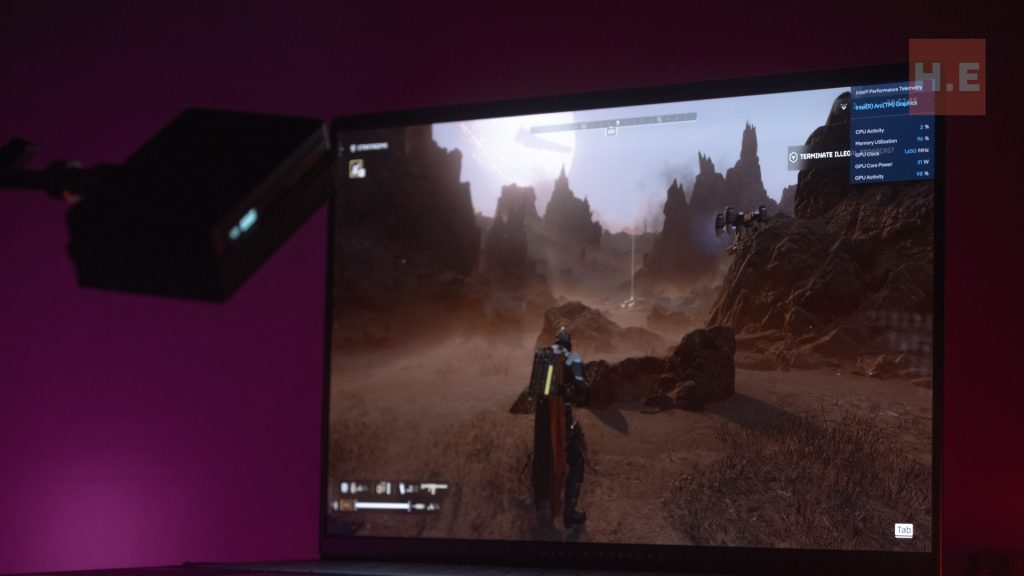
There are several levels of HDR display, ranging from the older standards of 400, 500, 600, and 1000 nits, to the newer True Black 400, True Black 500, and True Black 600. The ASUS Vivobook S 16 OLED’s display is VESA Certified DisplayHDR True Black 600, boasting the highest quality HDR currently available for laptop displays.
Who should choose what?
- Office Workers: Not essential for everyday work.
- Gamers: Can enhance visuals in HDR-compatible games, but not all games support HDR. Consider your game library.
- Content Creators: Ideal for working with HDR content and ensuring accurate representation.
- Everyday Users: Offers better visuals for watching HDR content, but not necessary for basic tasks.
Resolution: Unveiling the Details
Resolution refers to the number of pixels displayed on the screen. Higher resolution translates to sharper images and more screen real estate for multitasking.
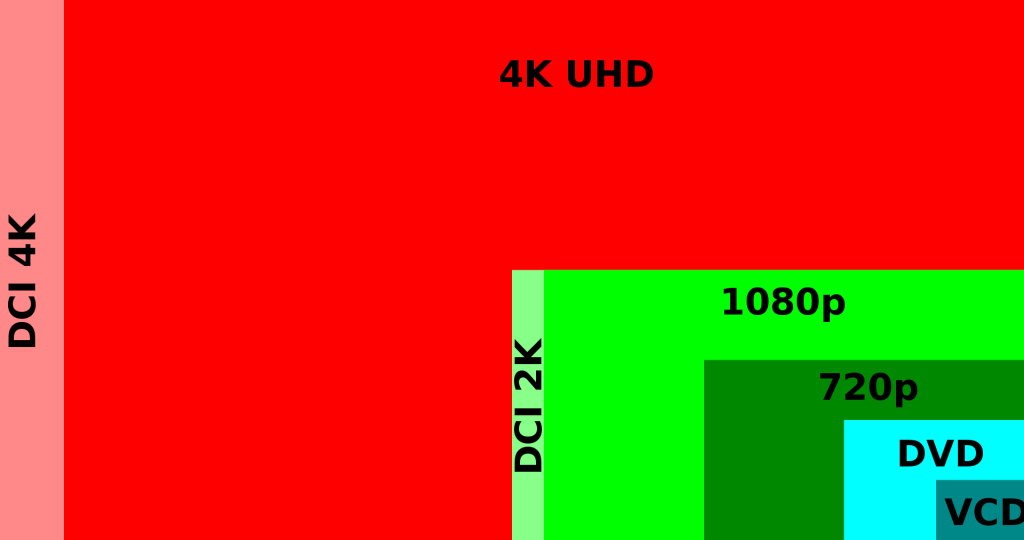
For now the mainstream Full HD (1920 x 1080) resolution is sufficient for most office tasks and even are the most popular gaming resolution, while some prefer QHD (2560 x 1440) or even 4K (3840 x 2160) for sharper visuals and a more immersive experience.
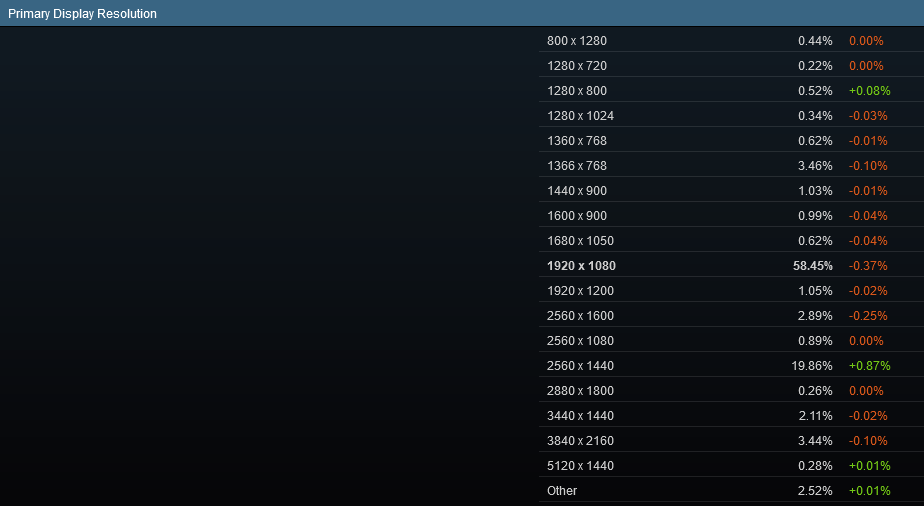
A good example of laptop resolution

The ASUS Vivobook S 16 OLED have an unique resolution of 3200 x 2000, which is roughly 3.2K at the golden 16:10 aspect ratio. A 3.2K resolution on a 16:10 display offers a sweet spot between sharpness and screen real estate.
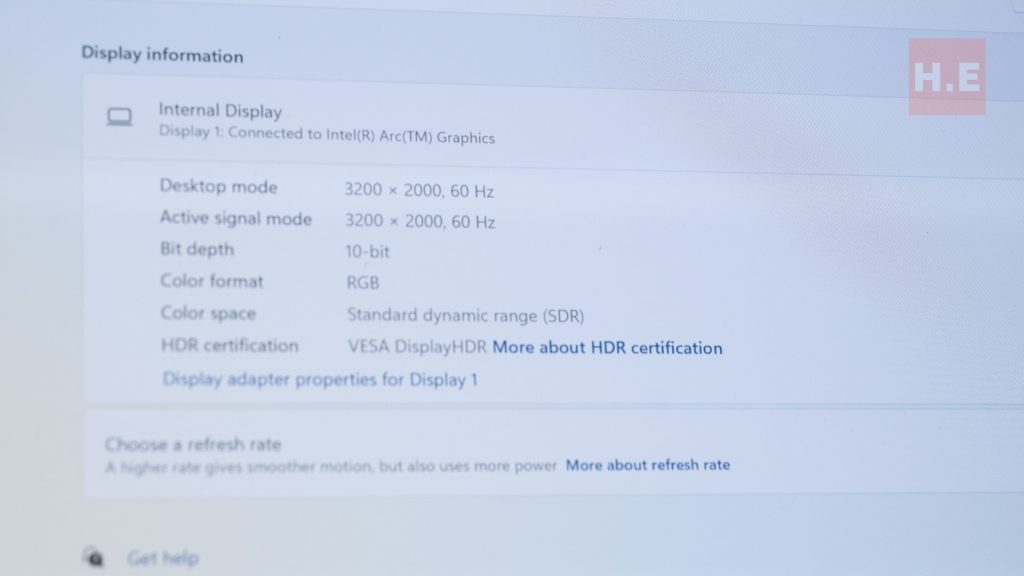
The 3.2K resolution packs in more pixels than traditional QHD (2560 x 1440) displays, resulting in crisper visuals and finer details. Paired with the 16:10 aspect ratio, you get a taller screen that’s well-suited for multitasking and productivity applications.
Who should choose what?
- Office Workers: Full HD (1920 x 1080) is sufficient for most office tasks.
- Gamers: Full HD or higher (QHD, 4K) depending on preference for sharper visuals and potentially smoother gameplay (if paired with a powerful graphics card).
- Content Creators: QHD or 4K resolution is ideal for sharper details when working with photos and videos.
- Everyday Users: Full HD is suitable for most everyday tasks. Consider higher resolutions for futureproofing or if you desire sharper visuals.
Color Space: Unveiling the True Spectrum
Color space becomes crucial for users who rely on accurate color representation, particularly content creators. It defines the range of colors a display can produce. The standard sRGB color space covers most web content and everyday use.

However, professional graphics work demands a wider color space like Adobe RGB, which allows for displaying a more extensive range of colors for richer and more lifelike visuals.

Content creators should prioritize displays covering at least 90% of these wider color spaces. An additional option to consider is DCI-P3, a color space commonly used in the film industry. Here’s a breakdown of the most common color spaces:
- sRGB: The standard color space for web content and everyday use. Most laptops will cover at least sRGB.
- Adobe RGB: A wider color space than sRGB, commonly used in professional graphics work for photography and print.
- DCI-P3: A color space developed for digital cinema, offering a wider range of colors than sRGB but with a slightly different focus on specific color regions compared to Adobe RGB.
A Good example of Display with good color space:
The ASUS Vivobook S 16 OLED boasts outstanding color space performance. Our tests show that its OLED display is capable of 100% sRGB coverage, 96.3% ARGB coverage, and 97.7% DCI-P3 coverage, delivering exceptional color accuracy and a vast color palette.

100% sRGB ensures photos and web content appear exactly as intended, while the high ARGB and DCI-P3 coverage unlock a wider range of colors, bringing visuals to life for creative fields like graphic design and video editing.
Who should choose what?
- Office Workers: sRGB is perfectly adequate for everyday tasks.
- Gamers: A wider color space can enhance the gaming experience, but it’s not a top priority for most gamers.
- Content Creators: A wide color space like Adobe RGB or DCI-P3 is essential for professional work. Look for displays covering at least 90% of these color spaces.
- Everyday Users: A wider color space can provide more vibrant visuals, but sRGB is sufficient for most everyday tasks.
Choosing Your Perfect Display: Tailoring to Your Needs
Now that you’re armed with this knowledge, consider these factors when selecting your ideal laptop display:
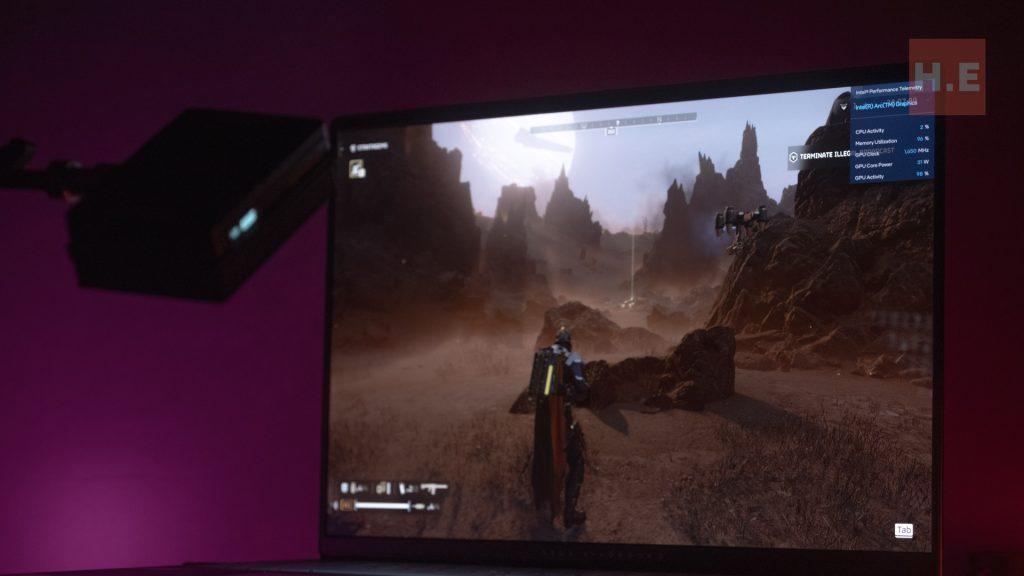
- Primary Usage: Office work demands a balance of features, while gamers prioritize refresh rate and response time. Content creators need high color accuracy and contrast. Everyday users can find a happy medium without needing the most extreme specifications.
- Budget: Higher-end displays with features like OLED panels, HDR, and wider color spaces typically come at a premium.

By understanding your needs and considering these display aspects, you can confidently choose the perfect display that elevates your laptop experience. Remember, the ideal display isn’t a one-size-fits-all solution. By prioritizing the features most relevant to your usage, you’ll ensure a display that delivers optimal performance and visual satisfaction.
Here’s a quick reference table to help you prioritize display features based on your user type:
| User Group | Panel Technology | Refresh Rate | Contrast Ratio | Color Space | HDR | Resolution |
| Office Worker | OLED, IPS, TN | 60Hz | 1000:1+ | sRGB | Not essential | Full HD |
| Gamer | OLED, TN | 144Hz+ | High | Not essential (but can enhance visuals) | HDR or Dolby Vision for best experience | QHD or higher (depending on preference) |
| Content Creator | OLED, IPS | 60Hz (acceptable, higher can be beneficial) | High (1000:1+) | Wide color space (Adobe RGB or DCI-P3) | HDR or Dolby Vision for best experience | QHD or higher |
| Everyday User | OLED, IPS, TN | 60Hz | Decent | sRGB (acceptable, wider color space can provide richer visuals) | Not essential | Full HD (consider higher for futureproofing) |
Remember, this is a general guideline. Always prioritize the features most important to your workflow and adjust your choices based on your budget.
The Final Pixel
By understanding display technology and its key aspects, you can now make informed decisions when choosing a laptop. Remember, the ideal display enhances your experience, whether you’re conquering spreadsheets, exploring virtual worlds, or creating masterpieces. So, equip yourself with the knowledge in this guide, and go forth to find your perfect pixel!

If you want a display with would be almost perfect for all kinds of use, do consider laptops with ASUS Lumina OLED series, a display develop to address all crucial points of a good display by design. For 3 years ASUS has been dominating the OLED market, providing OLED solution to more than half of the market needs.
Here are some of the laptop we tried with really good displays:
Asus Vivobook S 16 OLED:
Huawei MateBook 14 2024:




